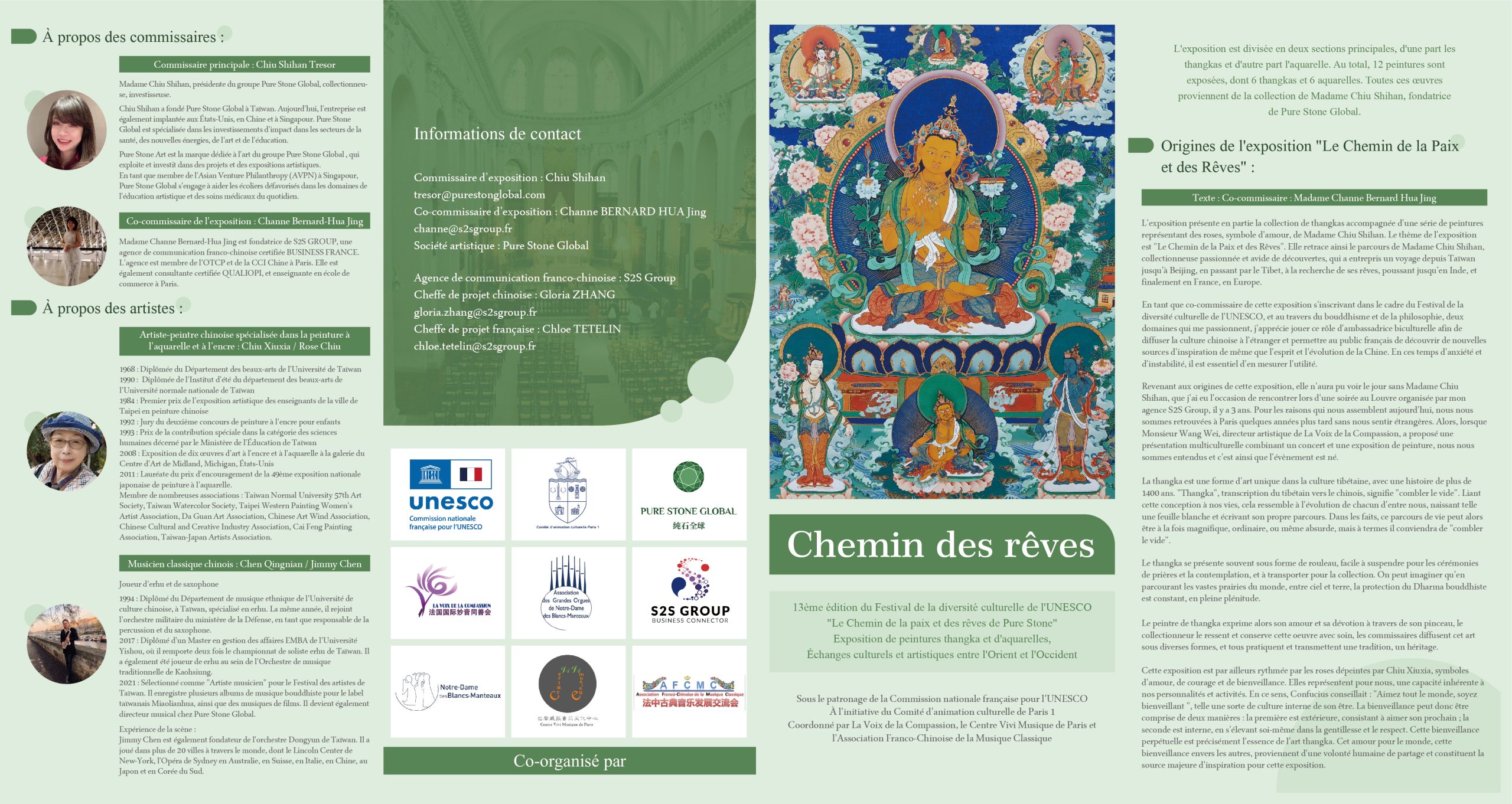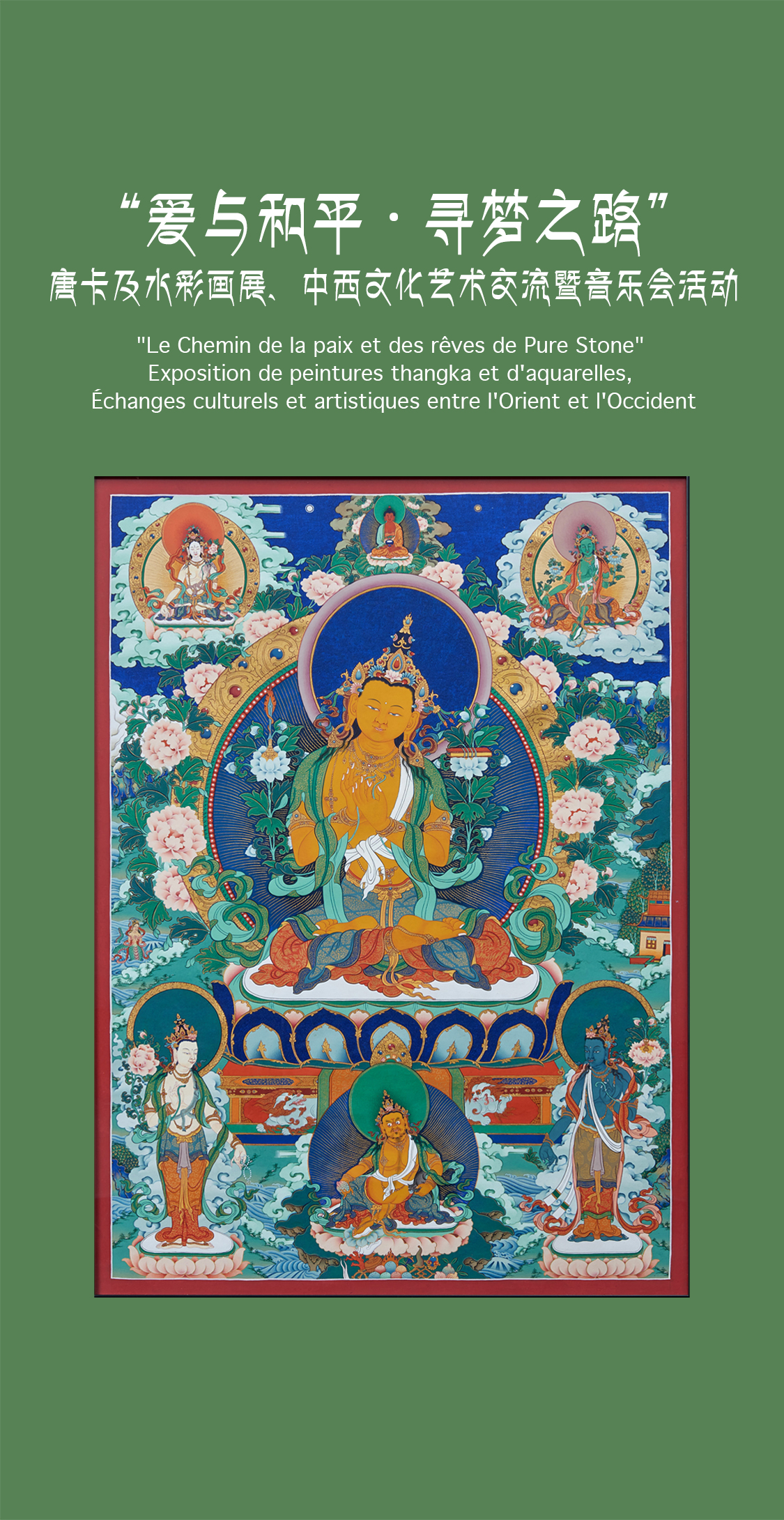Co-organized by: France International Melody and Benevolent Association, Paris Vivienne Music and Cultural Center, Sino-French Classical Music Development and Exchange Association. This event is under the auspices of UNESCO and the Central Government of Paris City.
About the curators:

Exhibitor: Shihan Tresor Qiu
Pure Stone Global, founded by Chiu Shihan, is from Taiwan. The business scope is in the United States, China, and Singapore. We specialize in healthcare, new energy, art, education and other impact investments.
The art brand of the Stone Global Group operates and invests in art-related projects and exhibition activities.
As a member of Asian Venture Philanthropy (AVPN) in Singapore, PureStone Global Group is committed to helping underprivileged school children in their corporate social responsibility, including the development of arts education and life care.
Co-curator: Ms. Channe Bernard Hua Jing
Founder of S2S GROUP, a Paris-based Sino-French PR and advertising agency, accredited by BUSINESS FRANCE;
OTCP, a member of the CECC Trade Promotion Council;
French national qualification QUALIOPI consultant;
Lecturer at the Paris School of Business.
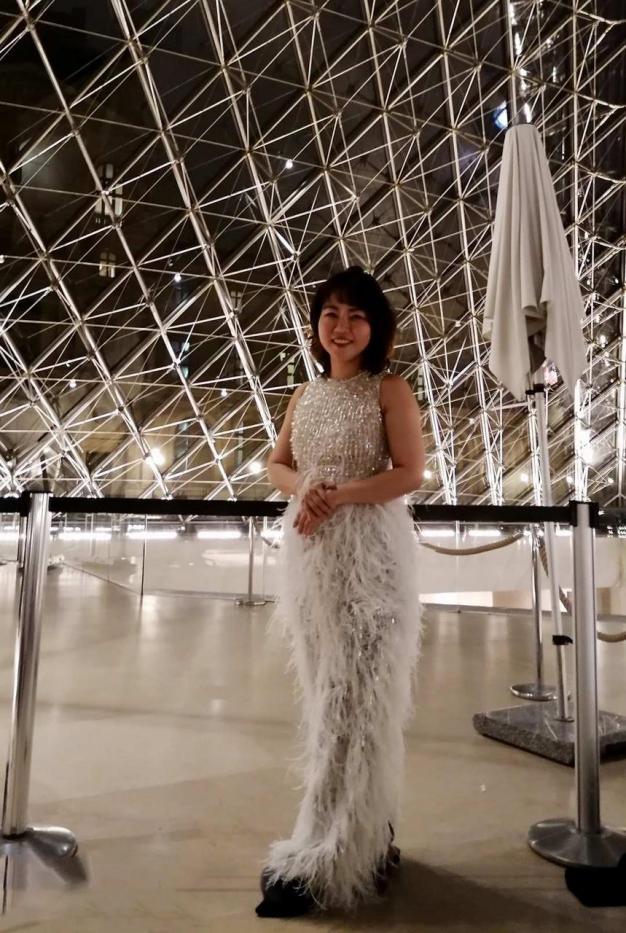
About the artists: À propos des artistes
Chinese ink and color painter: Rose Chiu
1968 Graduated from the Department of Fine Arts, Taiwan Normal University, Grade 5-7
1990 Completed Summer Institute, Department of Fine Arts, National Taiwan Normal University
1984 First place in the Taipei City Teachers’ Art Exhibition in Chinese painting
1992 Judge of the 2nd Cross-Straits Children’s Ink Painting Competition
1993 Special Contribution Award in the Humanities Category from the Taiwan Ministry of Education
2008 Michigan Midland City Art Center Fine Arts Club Exhibition of ten full-length ink creations
2011 Awarded the prize for watercolor painting at the 49th All Japan Exhibition Member of Taiwan Teachers’ University 5-7 Painting Association, Taiwan Watercolor Painting Association, Taipei City Western Painting Women’s Painting Association, Da Guan Painting Association, Chinese Art and Wind Painting Association, Chinese Cultural and Creative Association, Color Wind Painting Association, and Taiwan-Japan Artists Association
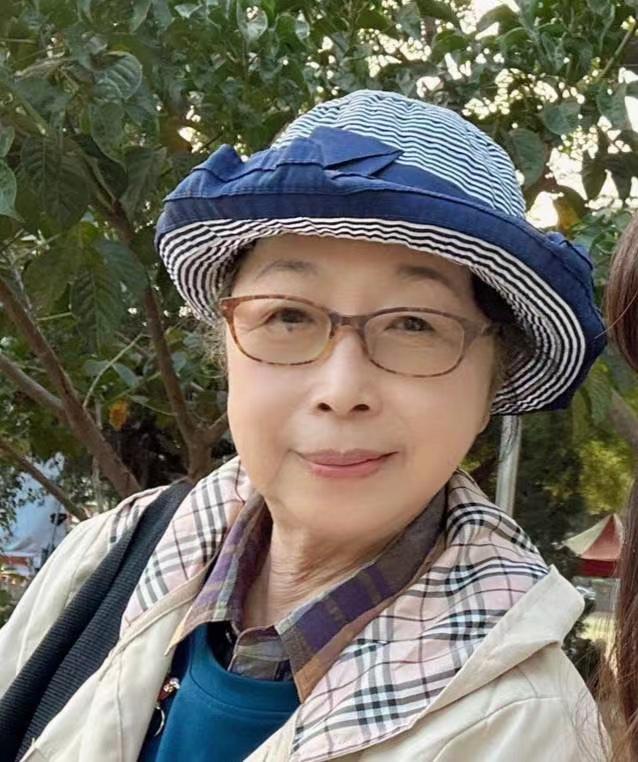
Chinese classical musician : Jimmy Chen Qingnian
Erhu / Saxophone player
1994 Graduated from the Department of Ethnomusicology, Chinese Culture University, Taiwan, majoring in Erhu
1994 Member of the Ministry of National Defense Military Band – Majored in Percussion and Saxophone
2017 Graduated from Yishou University with an EMBA in Business Management
Winner of 2 Taiwan Erhu Solo Competitions
Served as an erhu player in Kaohsiung City National Orchestra
2021 Selected as an artist in the music category of Taiwan Artist Festival
Recorded several Buddhist albums and music scores for Myo Lianhua Records in Taiwan
Music Director of Pure Stone Group
Founder of Taiwan Dong Yun Orchestra
Performance experience: Lincoln Center, Sydney Opera House, Switzerland, Italy, China, Japan, Korea, etc. in more than 20 cities.

Preface to the painting exhibition:
The exhibition is divided into two main sections, thangka and watercolor art. A total of 12 paintings are on display, 6 of which are thangkas and 6 are watercolors. All of them are works from the collection of Ms. Chiu Shihan TRESOR (Taiwan).
Origin of the exhibition “Love and Peace, the Road to Dreams”:
Text: Co-curator: Ms. Channe Bernard Hua Jing
Even though it was May Day, the International Labor Day when the whole world was off, I started the first day of preparation for the curator, destined to be a tiring and fulfilling day for me, enlightenment for a day means enlightenment for a lifetime. The exhibits in this small exhibition are part of the collector’s thangka collection and rose series, with the theme: Night of Pure Stone-Love and Peace, the Road to Dreams. It records the journey of the collector, Ms. Chiu Shi Han, who knew and acted in unison, departing from Taiwan, going straight to Beijing, crossing Tibet, searching for dreams in India, and arriving in France, Europe.
Buddhism and philosophy are both fields that I am very passionate about, but due to my lazy and dull nature, I often stop at nothing. As a curator, I have been included in the United Nations Multicultural Festival project, and I must start the mode of Endeavouring to be a civil messenger of Chinese culture overseas, even if my power is weak, which may be necessary in these anxious and unpeaceful times.
It was a close friend of mine, the collector Ms. Shihan, who met me during a closing event of the Louvre organized by our company, and for well-known reasons, we met again in Paris three years later without feeling strange. When Mr. Wang Wei, the artistic director of the International Association of Myriad Voices and Goodwill in France, recommended the multicultural presentation of the concert and the painting exhibition, we immediately hit it off and the music and painting exhibition was born.
Thangka is a unique artistic form in Tibetan culture with a history of over 1400 years. “Thangka” is the transliteration of the Tibetan term, which translates to “filling the gap” in Chinese. It seems to resemble each one of us, born with a blank sheet of paper, to write our own lives—sometimes splendid, sometimes ordinary, sometimes leaving space, or even absurd, but ultimately filling the gap. Thangka takes various forms of “scroll paintings,” which are convenient for hanging, worshiping, admiring, and carrying around. Imagine being on the vast grasslands of the world, always accompanied by the protection of Buddhist teachings and the support of faith—how fulfilling it is.
Thangka is a form of artistic expression through which individuals convey their love and devotion with a paintbrush. Collectors deeply appreciate and cherish Thangka artworks, while curators utilize diverse formats to promote and disseminate them. All these endeavors serve as a form of spiritual practice and cultural heritage preservation.
This exhibition intertwines with the rose-themed artworks of Ms. Qiu Xiuxia. The rose symbolizes love, courage, and goodwill. For us, the ability to love the world is an essential capacity. Confucius said, “Love all, but close to the virtuous.” It is a form of inner cultivation. We can understand “virtue” in two ways: firstly, it is outward-facing, treating others well and “loving all”; secondly, it involves elevating one’s own inner state to a higher and more virtuous realm. A person capable of loving more people, always considering the feelings of others, embodies “great love.” Such individuals are truly remarkable, mirroring the compassionate nature of Thangka bodhisattvas. This love for the world and others stems from a refined character, and it represents the ultimate source and theme of this exhibition.
The Road to Dreams:
Text: Collector/Curator: Qiu Shihan TRESOR
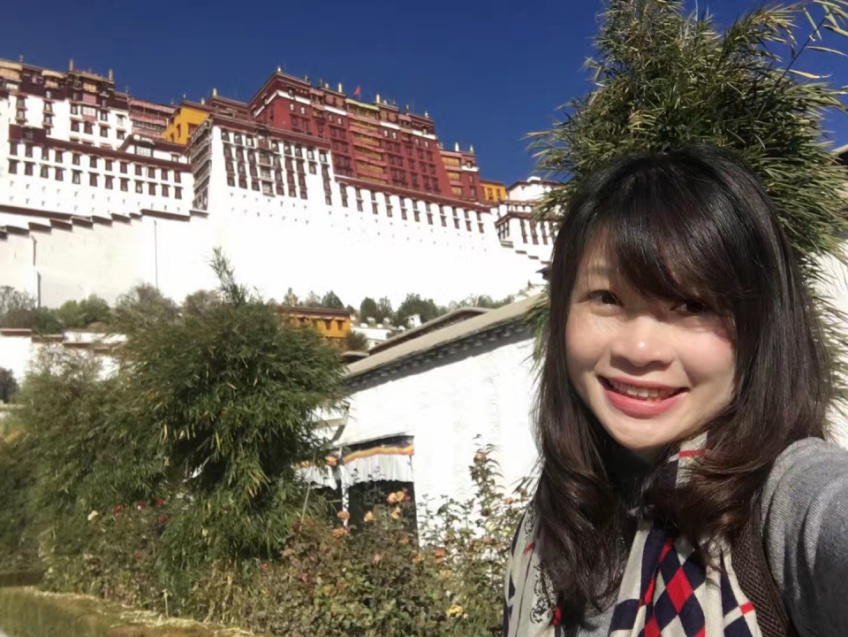
I remember in my younger days, I often had dreams of the Green Tara and the manifestation of the Lotus-born Guru. In these dreams, I would witness heavenly landscapes that left a lasting impression on my mind, and the protective deities of Tibetan Buddhism became intertwined within me. When I was in my thirties, due to work reasons, I found myself in Beijing, where I visited the Yonghe Temple, a Tibetan Buddhist temple. There, I lit an incense stick, paid homage to the Buddhas and Bodhisattvas, and my heart was filled with an indescribable sense of awe and inspiration. It was at that moment that my journey of dreams began.
Inside the Yonghe Temple, I beheld the golden statue of Master Zhangjia and felt the power of his teachings from years past. Yonghe Temple holds a special place as a revered site for Tibetan Buddhism in the Qing Dynasty, a testament to the profound connection between Emperor Qianlong and the third incarnation of Master Zhangjia.
I visited the Potala Palace, Sera Monastery, Ganden Monastery, Drepung Monastery and other Tibetan Buddhist temples, and I was overwhelmed and wept in front of the temple’s pagoda.

The following year I arrived in Bodh Gaya, India, the place where the Buddha became a monk. I attended a grand Tibetan Buddhist puja, mind-blowing energy, as if awakening memories of past lives and returning to the embrace of long-lost relatives. Thousands of years of waiting, at this moment, is the karmic gathering of cosmic energy. In India, I was connected with the thangka of the Lotus Sangha, which is like what I saw in my dream, so familiar and friendly, and the path of pursuing my dream is full of Dharma joy.
I love art, especially Tibetan thangka art, with its long history, exquisite brushwork, and the artist’s continuous chanting of Tibetan Dharma sutras while painting, which is full of energy. The thangkas on display in Paris are specially selected for their meticulous painting techniques and rich stories of the characters, hoping to let European friends understand the art of thangkas and the compassionate power of Buddhism, showing the spirit of love and peace, which also represents the starting point of my journey in Europe.
What is thangka art?
Thangka is a distinctive form of painting in the Tibetan cultural heritage of China. It possesses a vivid ethnic character and a unique artistic style, depicting the divine world of Buddhism with bright colors. Traditionally, the pigments used in Thangka painting include precious mineral gemstones such as gold, silver, pearls, agate, coral, turquoise, peacock stone, cinnabar, as well as plant-based materials like saffron, rhubarb, and indigo, symbolizing their sacredness. These natural ingredients ensure that Thangka paintings retain their vibrant and dazzling colors even after centuries, earning them the reputation as precious treasures of Chinese ethnic painting and being referred to as the encyclopedia of the Tibetan culture. Thangka is also a valuable intangible cultural heritage of the Chinese nation’s folk art.
The traditional process of creating Thangka is demanding and involves highly complex procedures. It must strictly adhere to the rituals and requirements outlined in the scriptures and instructions of the masters. This includes pre-painting rituals, canvas preparation, composition sketching, coloring, outlining, gilding with gold and silver, opening the eyes of the deities, mounting, and consecration, among other meticulous craftsmanship steps. The production of a single Thangka takes a considerable amount of time, ranging from several months to over a decade.
In this exhibition, a total of six Thangka paintings are displayed, featuring the Thousand-Armed Avalokiteshvara Bodhisattva, Manjushri Bodhisattva, Mahasthamaprapta Bodhisattva, Green Tara with the Twenty-One Taras, White Tara, and Vajrabhairava.
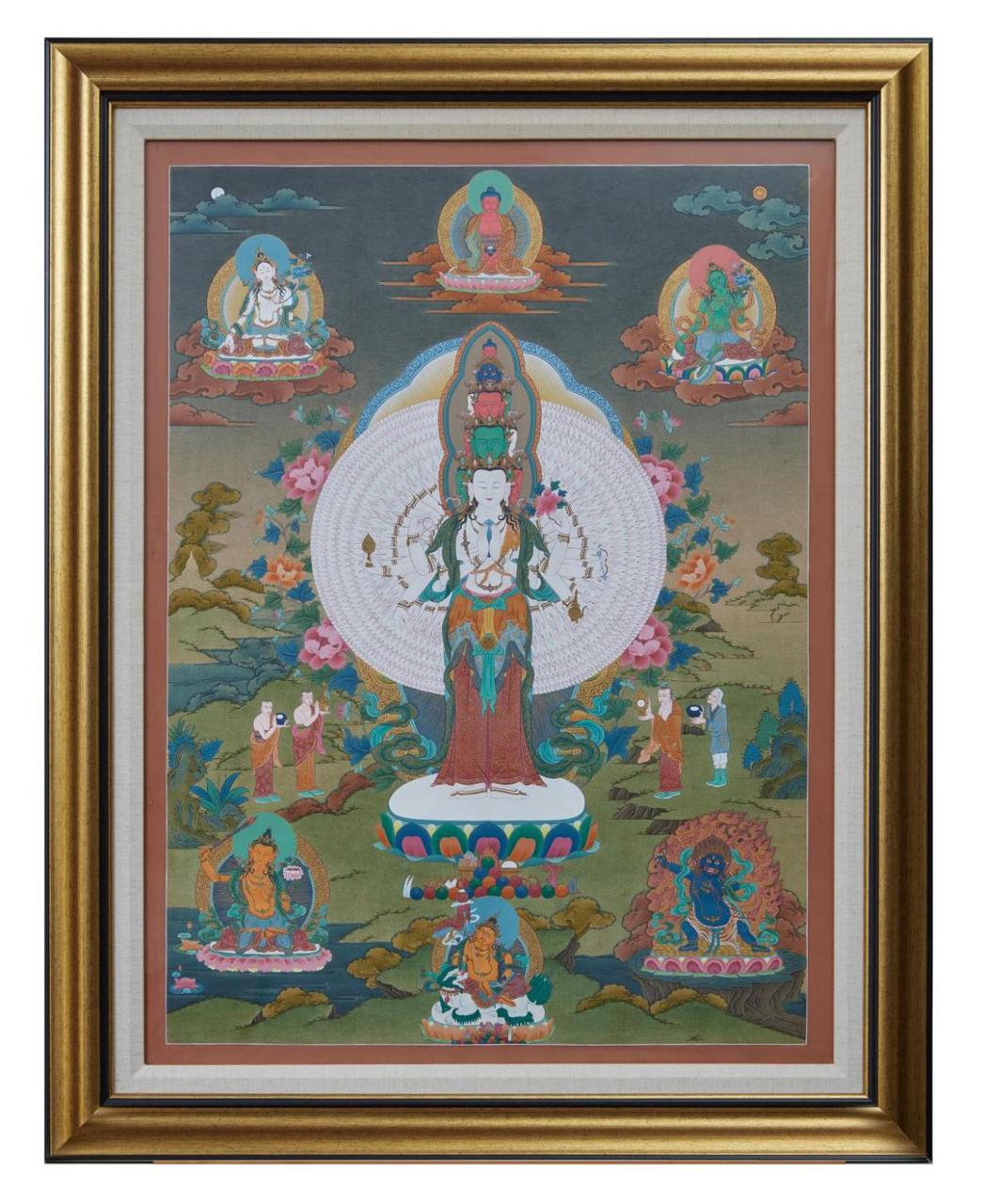
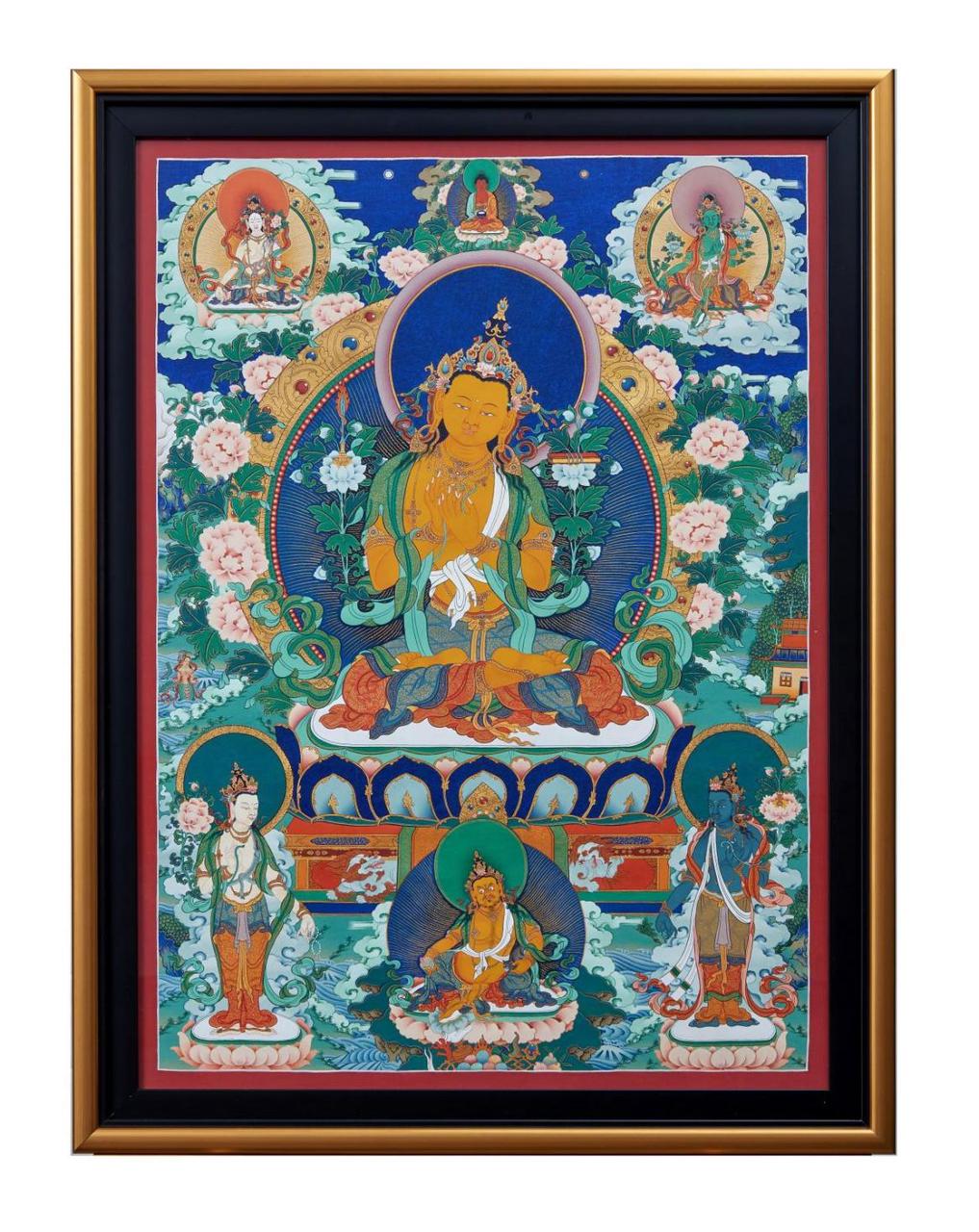


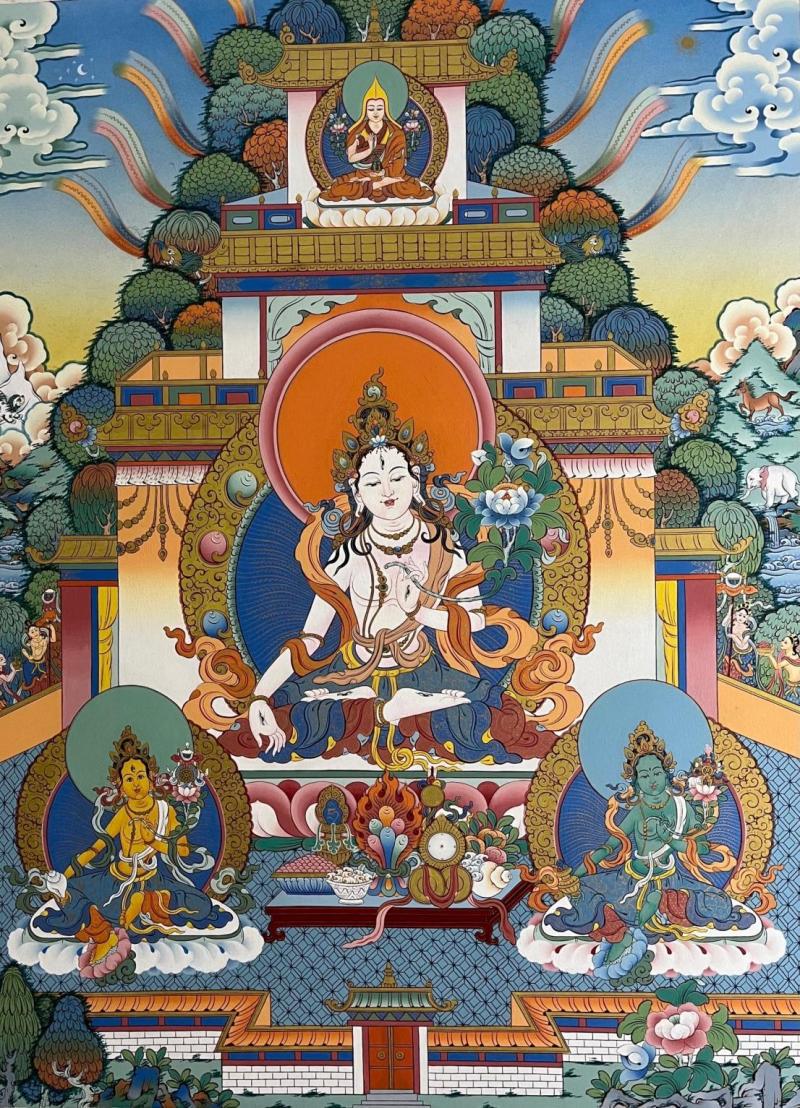

Thangkas are a unique form of pictorial art in Tibetan culture in China. They possess distinct ethnic characteristics and a unique artistic style, depicting the sacred world of Buddhas with vibrant colors. The traditional pigments used are made from precious minerals such as gold, silver, pearls, onyx, coral, turquoise, malachite, cinnabar, as well as plants like saffron, rhubarb, and indigo. These natural materials ensure the brilliance and luminosity of the thangkas’ colors, which remain vibrant even after several centuries. That’s why they are considered treasures of Chinese pictorial art and intangible cultural heritage.
The traditional production of thangkas is strict and highly complex. It must adhere to the rituals and requirements outlined in sacred texts. It involves a range of craftsmanship processes, including pre-ceremonies, fabric preparation, composition design, coloring or outlining, the addition of gold and silver pigments, as well as embroidery and mounting. Creating a thangka takes time, ranging from six months to over ten years.
This exhibition features six different thangkas: Thousand-Armed Avalokiteshvara, Manjushri, Mahasthamaprapta, Green Tara and the Twenty-One Taras, White Tara, and Vajrabhairava.
Rose of Love:
Text: Collector/Curator: Qiu Shihan TRESOR
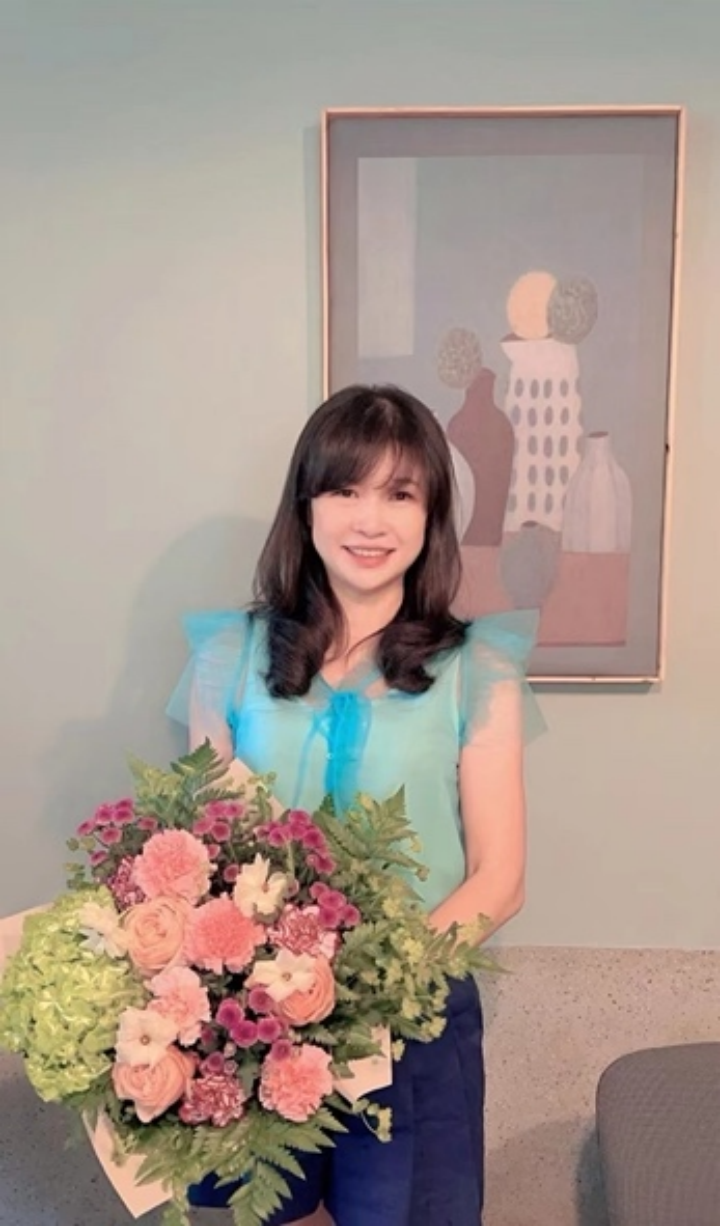
The rose is the “Queen of Flowers”, and its language represents passion and warmth. Giving roses to others leaves a lasting fragrance, and using roses to express passionate love, peace and sincerity to the loved ones.
The rose painting selected for this occasion is a watercolor painting by Taiwan teacher Qiu Xiuxia. The creative mood is free with elegance, and the colorful rose window flowers in the church reflect each other.
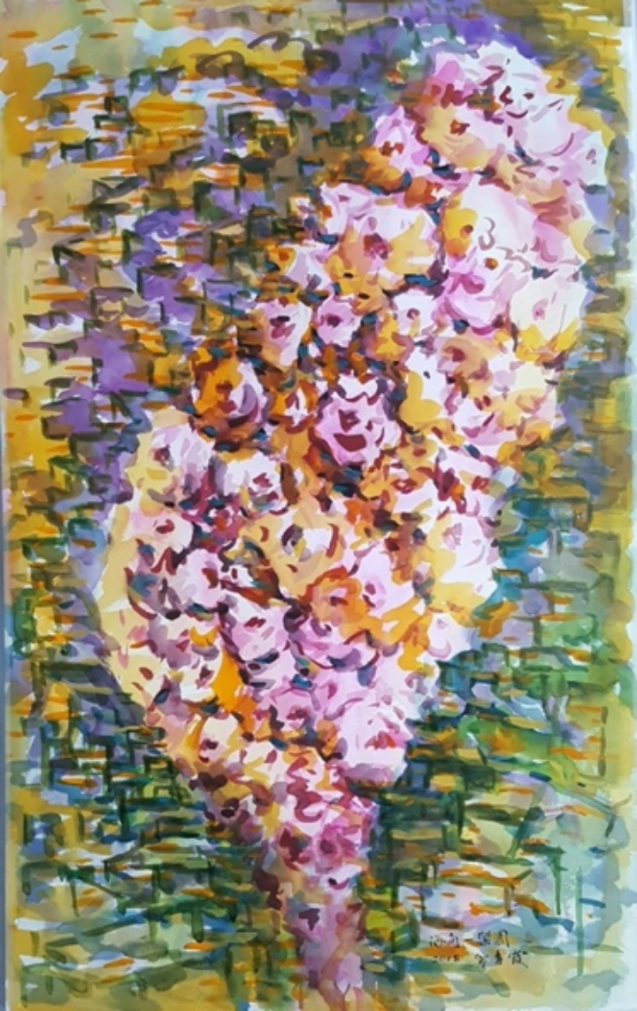
In the Vajra Sutra, it is said that “all living things are like dreams and bubbles, like dew and lightning, and should be viewed as such”. Qiu Xiu Xia’s watercolor roses show the meaning of this passage in the Vajrayana Sutra, using light and dark tones to highlight the temperament of the roses, resembling flowers but not flowers, resembling scenery but not scenery, abstract but realistic, realistic but full of abstract, sometimes free and spontaneous, sometimes elegant and fragrant, allowing people to have boundless imagination and feel the breath of love and peace.
A total of six rose paintings by Ms. Qiu Xiuxia are on display, namely Welcome Spring Song (2017), One of Autumn Thoughts (2018), Completeness (2018), Home Writing (2020), May Writing (2022), and Cape One Paradise (2018).


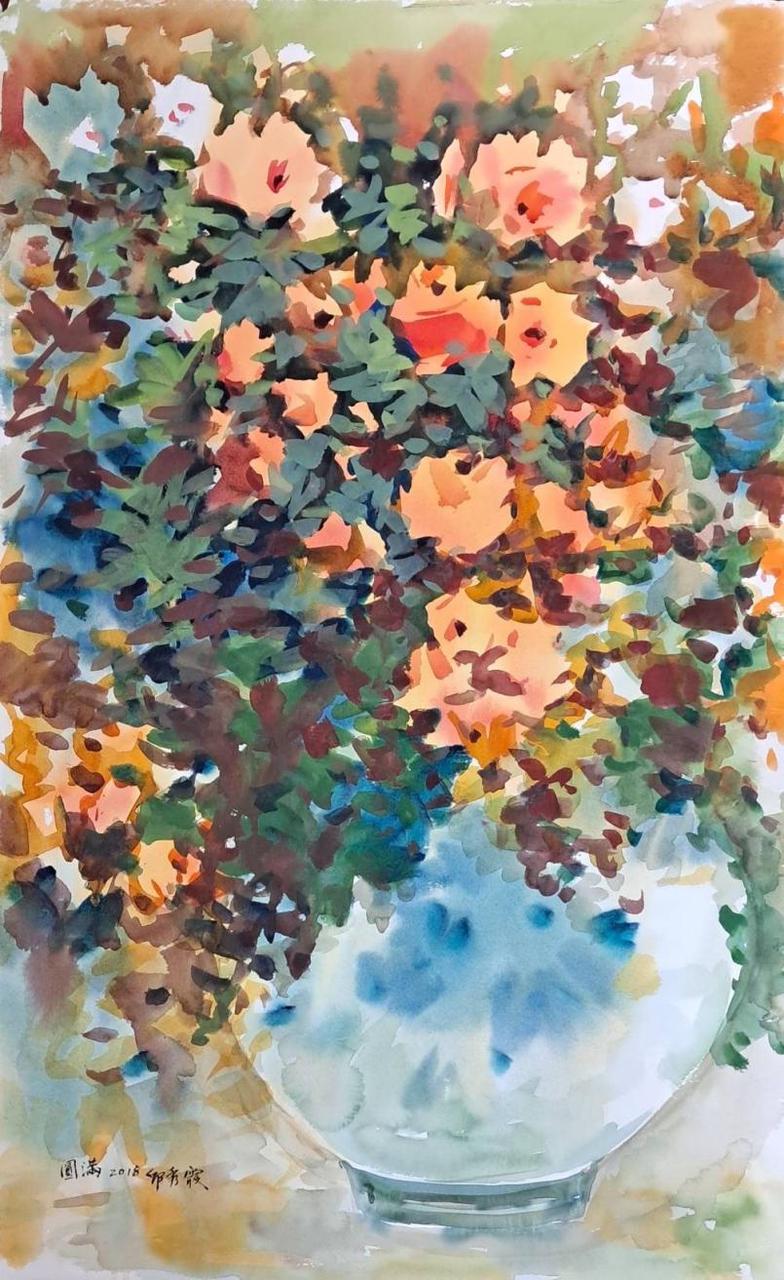

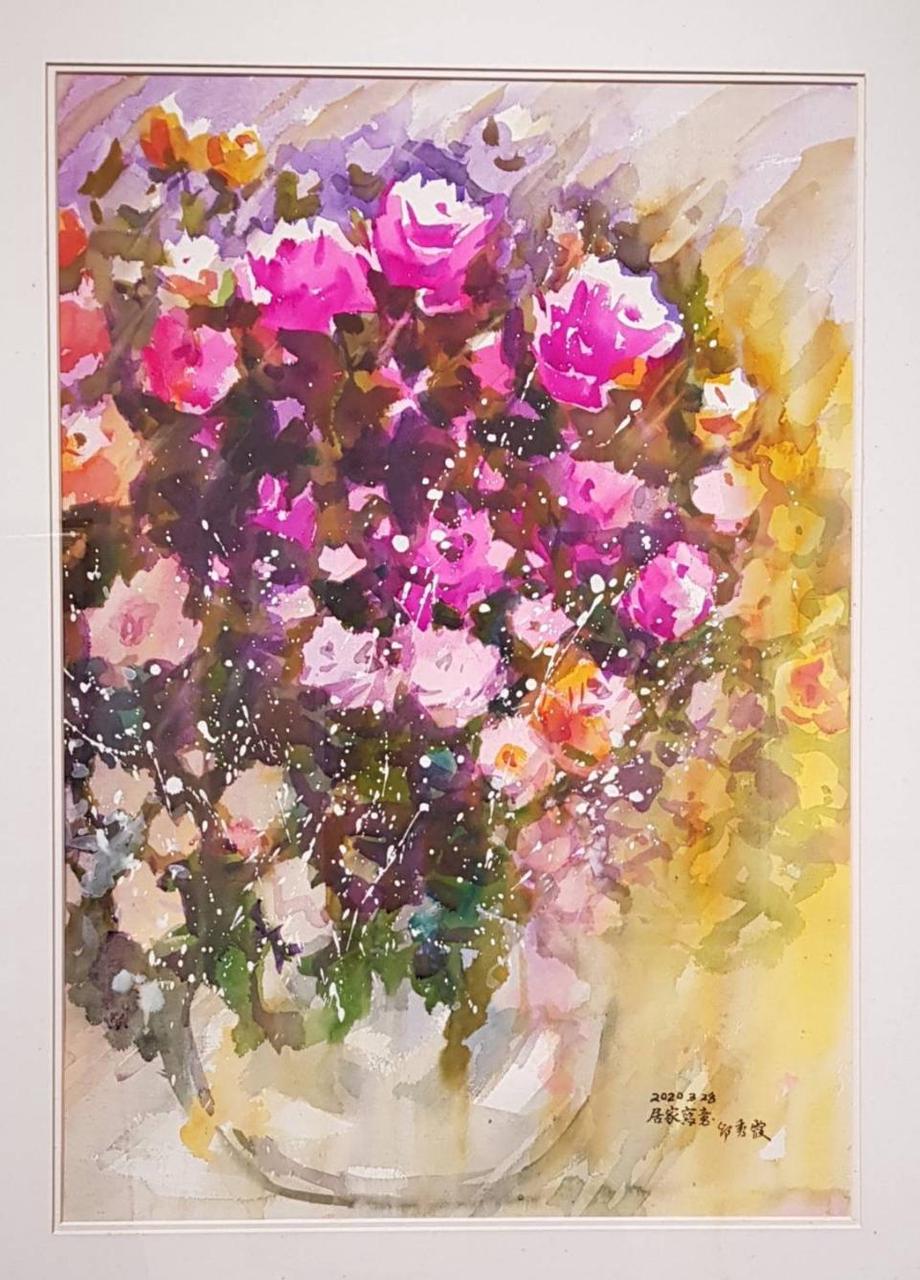
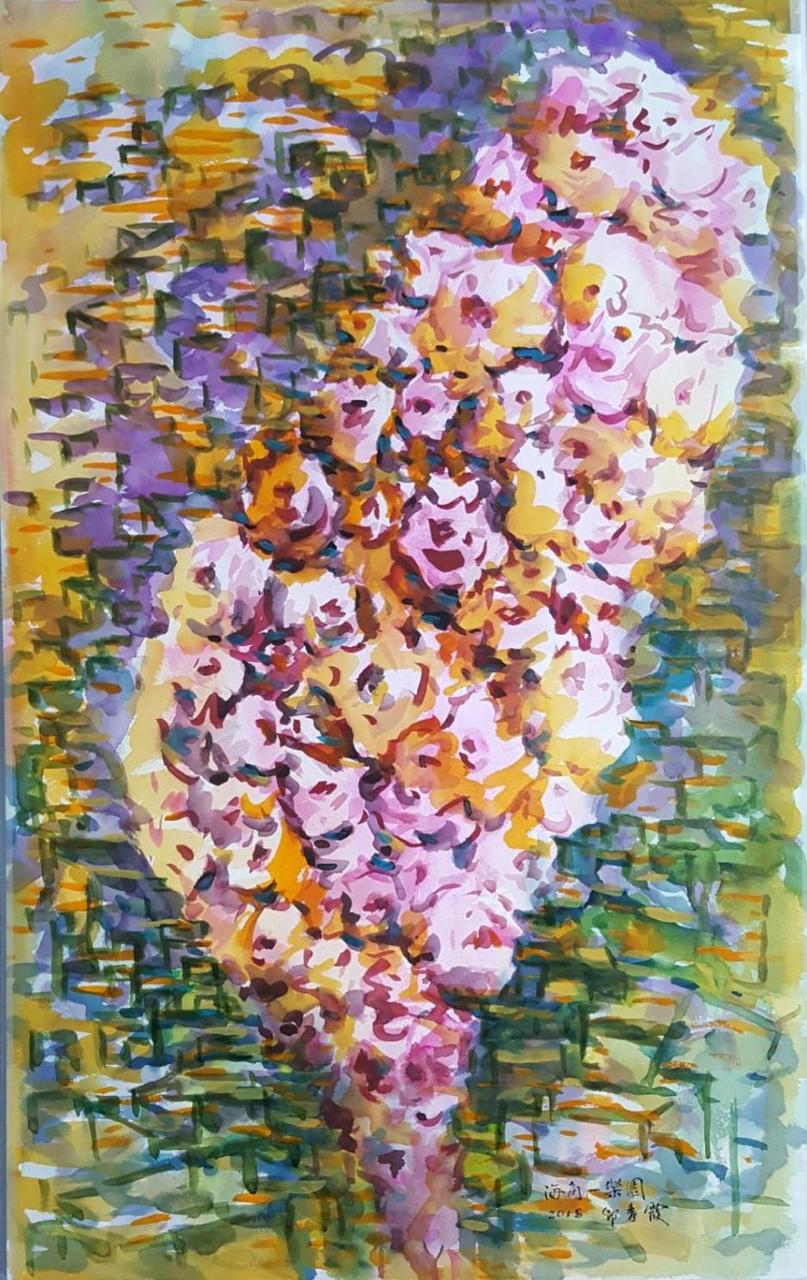
Concluding remarks by curator Shihan Tresor Qiu:
Life is a series of gatherings and partings, arising from destined connections. I am delighted to have the opportunity to exhibit my collection here in Paris, and I would like to express special thanks to UNESCO, the Paris City Government, my dear friend Ms. Channe Bernard, and the S2S GROUP team for their tremendous support. Despite the tight timeline, we have had numerous meetings, discussions, and reflections to present the best possible outcome to all of you.
I look forward to fostering cultural exchanges between the East and the West through this exhibition and practicing the ideals of Buddhism for the benefit of all sentient beings. May the concepts of love and peace flourish, and may everyone find fulfillment, happiness, and joy.
Contact: Informations de contact
Curator: Tresor Qiu Shihan
Co-curator: Channe BERNARD, Hua Jing
Art Company: Pure Stone Global
Public Relations and Advertising Agency: S2S GROUP
China Project Manager: Gloria Zhang Li Nan
French Project Manager: Chloe TETELIN
